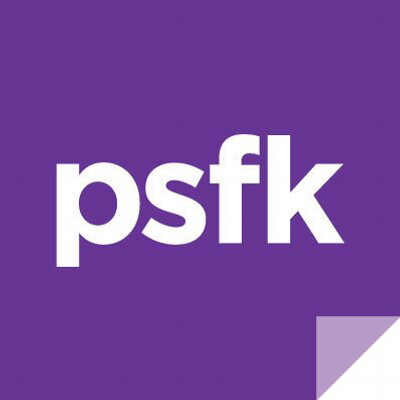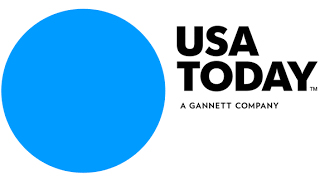In the news
Looking for inspiration, design tricks, how to make a great cover, promoting your yearbook and engaging your community?
Most recent

September 23, 2013
Newsday: long island, ny school yearbooks get a boost from technology
LI school yearbooks get a boost from technology
By Beth Whitehouse
When "Magic Treehouse" author Mary Pope Osborne visited Kayleigh Stalter's Lynbrook elementary school, her mom snapped a photo of the third-grader with the author. Mary Beth Stalter never figured that shot would be printed in Kayleigh's fifth-grade school yearbook two years later.
And frankly, it wouldn't have appeared if the Marion Street Elementary School hadn't opted to use a company called Treering, which allows schools to build their yearbooks online and gives each student two pages of personal photos commemorating their own school experiences.
Parents can create the pages themselves and surprise their kids, or work with their children to choose which photos to represent their early school years. Some parents add photos that have nothing to do with academia -- family trips, travel basketball teams, communions. Some add photos not just from fifth grade, but from kindergarten through elementary school. The two custom pages appear only in that student's copy of the yearbook.
Corey Guglielmo's daughter, Felicia, also a 2013 graduate of Marion Street Elementary, was thrilled when she received her yearbook. "The first things she went to was her pages," Guglielmo says.
EVOLUTION
The school yearbook has evolved, and it is still changing. It used to be an enterprise run by small committees choosing from limited, tactile photographs that left most students relegated to a portrait picture and maybe a spot in a team or club snapshot. "The yearbook, over the years, became a popularity contest," says Gregory Durdock, president and chief executive of a new Connecticut-based company called Odyssey Interactive.
With the advancement of online technology through companies such as Treering, Jostens, Shutterfly, Lifetouch, and Walsworth, schools became able to "tag" students in photos and count to ensure more students appeared more often on yearbook pages.
"A very popular option is to put an individual's photograph on the actual cover of the book," says Eric Miller, director of the yearbook production at the Elmont-based Irvin Simon Photographers & Yearbooks. The company can also add, for instance, the school soccer team logo or icon from another club the child might be part of on his or her cover.
Technology has also allowed wider participation, with students and parents able to upload photos for consideration in the general yearbook. It allows collaboration on pages, greater choices of typeface, background, and art.
"This is great because it allows yearbook club members to go home and work on it at home," says Nicole Mamzellis, yearbook adviser at Kings Park High School, which uses Walsworth to produce its $130 yearbook.
Durdock aims to push the envelope even further -- to eliminate the physical high schoolbook entirely and to publish yearbooks on interactive CDs, DVDs, or thumb drives that allow audio and video content as well as individualized entries that will appear to everyone. "People are coming to us because the paper yearbook is getting much too expensive, $85 or more," Durdock says.
ENTICED BY PRICE
Money does talk. "The original appeal for us to switch to Treering was that we probably saved nine dollars per book on the price," says PTA Yearbook co-chair Kristine Glanzer, bringing in the 56-page, softcover, elementary school yearbooks for less than $20 each. Because the PTA at Marion Street gives each student a yearbook as a gift, price is key.
A bonus was that, for the yearbook committee, the software was easy to follow, Glanzer says. The school photographer gave Glanzer a CD with all the individual student's school portraits on it, and Glanzer was able to smoothly upload that to a template. "One of the things I liked about Treering is they had a lot of online help," including tutorials you could watch again and again, Glanzer says.
At first, parents were confused by the custom pages. But between friends helping friends -- and kids helping their parents -- with the technology, "it wasn't as bad as they worried," Glanzer says.
It wasn't all smooth sailing, says Christina Kile, who worked on the West School's yearbook in Long Beach. "No online anything is perfect," she says. "Whenever there was an issue, they worked hand in hand with you to figure it out."
Last year, the West School was closed after Superstorm Sandy, and Kile says she thinks the school wouldn't have had a yearbook at all if they hadn't been producing it online. The PTA could do everything remotely: "You didn't need anything at the school."

June 20, 2013
Eschool news: new yearbook model is a win for students & schools
 New Yearbook Model is a Win for Students and Schools
New Yearbook Model is a Win for Students and Schools
Treering’s on-demand digital printing eliminates minimum orders and allows customization for each student By Ryan Novack
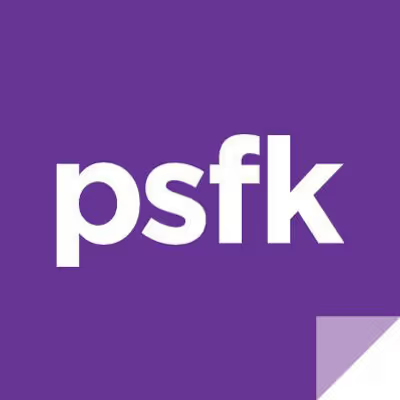
May 30, 2013
Psfk design & ideas news: high-schoolers can personalize yearbooks
HIGH-SCHOOLERS CAN PERSONALIZE YEARBOOKS WITH FACEBOOK PICTURES
By Leah Gonzalez
Yearbooks are a long-time tradition, but they can be quite costly for schools. Startup company Treering helps schools cut down on those costs by providing personalized yearbooks that are printed on demand for students.
Treering lets schools save money by requiring no minimum orders and no financial commitment from schools. Parents or students purchase the yearbook directly from Treering and Treering will only print what is purchased so there are no leftover yearbooks.
Parents and students over 13 can also personalize their own yearbook pages. Students can choose their own photos for their pages and even ask friends to create custom messages for them online. Their custom pages will only appear on their yearbook.
Treering’s web-based yearbook builder is easy to use and lets users save their pages to the cloud so schools and students don’t have to worry about backups. The software also allows online sharing of photos to make it easy for anyone to submit a photo for the yearbook.
Treering prints its yearbooks on recycled paper and also plants a tree for every yearbook printed. The company currently serves about 2,000 schools from all over the country and estimates to produce about 200,000 yearbooks this year. READ MORE

May 29, 2013
Slate: on-demand yearbooks saves students & schools big money
Most Likely to Succeed
The school yearbook business is a scandal. Here’s how to fix it.
You wouldn't know it to look at the products, but the school yearbook business is kind of shady. There’s a good chance you and your kid’s school are paying way too much for yearbooks—sometimes thousands or tens of thousands a year too much.
Here’s how the traditional yearbook business works: When big yearbook providers sign up with a school, they ask the school to predict how many books it will need for the year. These estimates are due months before graduation. Because class sizes and demographics shift from year to year—and because some kids have stopped buying yearbooks altogether, thanks perhaps to Facebook—yearbook advisers don’t have much to go on when they’re making their guesses.
For schools and for parents, there are big costs to guessing wrong. If a school orders too few yearbooks, some kids who want a book will go without. That’s why schools tend to err on the side of guessing high—and then get stuck with unsold yearbooks, and a huge bill to the yearbook company. To cover the costs of overprinting, some schools add an extra fee to the yearbooks—$10 or $20 per copy that you, the parent, must pay. Even so, lots of schools end up in hock to their yearbook providers. For instance, over the last few years, George Washington High School in San Francisco, one of the largest schools in the city, has had to eat the cost of so many unsold books that it now owes its yearbook company $50,000, according to the school’s yearbook adviser.
When the Treering founders, started sniffing around the yearbook business a few years ago, they were surprised by these shenanigans. The fundamental problem with the yearbook business, they realized, was that big yearbook providers were producing their books using offset printing—an expensive printing system that’s great for books with large print runs but that leads to high costs and little flexibility for yearbooks, whose print runs number in the hundreds or low thousands. Over the past decade, we’ve seen the rise of digital on-demand printing, which is now commonly used for photo books (the sort you order from Shutterfly or Blurb) and self-publishing. The Treering founders had a brilliant idea: Why not use the same printing process for yearbooks?
Thus was born Treering, the four-year-old yearbook startup, which now serves 2,000 schools across the country and will produce about 200,000 yearbooks this year. By printing yearbooks on demand, Treering beats traditional yearbook companies in pretty much every way.
When schools sign up with Treering, they don’t have to pay anything to the company—Treering’s only economic relationship is with parents who buy the yearbooks, so schools will never end up in debt to the firm. What’s more, the school doesn’t have to make a guess about how many yearbooks it needs, because Treering prints a book only after a student orders it. Digital printing also lets students customize their books—in addition to the “core” yearbook produced by the yearbook class, kids can add more pages that they design themselves. Finally—because schools don’t have to bake in the cost of overprinting, and because Treering prints books in the spring, when there’s excess capacity at on-demand printing facilities—Treering’s yearbooks are often cheaper than those offered by traditional yearbook providers.* Treering sells a 140-page hardcover yearbook—the average size for a high school—for around $50. That’s about $25 less than the price of a traditional high school yearbook.
“When we go out to talk to schools and tell them what we do, there’s only one question we get,” the CEO told me when I met him at Treering’s offices earlier this month: “ ‘What’s the catch?’ ” I wondered the same thing. At first, I suspected that Treering’s yearbooks might not look as good as those produced by offset printing. I was shown a sample yearbook that looked great—the paper and print quality was fantastic, and the hardcover was glossy and substantial. It looked just as good as any school yearbook I’ve ever seen.
Then I wondered if working on Treering’s yearbooks might be more difficult for schools’ yearbook staff and students. But I saw the firm’s Web-based software, which works on even the most ancient machines, and which is drop-dead easy to learn. What’s more, because Treering saves all its pages in the cloud, schools don’t have to worry about backing up their stuff, and they can’t lose months of work when computers crash. Treering’s model also lets parents and students share photos with the yearbook class online. For instance, if the yearbook staff didn’t send a photographer to the baseball game but a parent happened to get a great shot of a senior sliding into home plate, the staff can use that photo in the book.
And there’s one more thing: Because Treering’s books are printed on-demand, the company doesn’t impose stiff printing deadlines on the school’s yearbook staff. Big yearbook companies often want a fully completed yearbook several months before graduation—so events from the spring, like prom, can’t be in the book. Treering takes just four weeks to print and deliver books, so the yearbook actually includes most of the school year. (Like traditional yearbooks, Treering delivers its books just before school ends, but kids can always order copies later.)
Some traditional yearbook firms have begun to add features that compete with Treering’s books. For instance, Josten’s, the granddaddy of the yearbook biz, now lets schools add customizable pages to their books. But Josten’s only allows up to four custom pages, and it charges $15 extra for the option. Treering’s books come with two free custom pages, and parents can buy more for $2 per page, and there’s no limit to how many they can add. What’s more, Jostens still uses a network of sales reps to sell to schools—which is more expensive than Treering’s online model. And it still requires schools to sign a contract that includes an estimated print run, which leads to expensive overruns.
The CEO managed to convince me that Treering’s model was better than that of traditional companies. But I did wonder one more thing—was his business doomed in the long run? As more and more of our kids’ lives move online, they no longer need printed books to remember what happened in school. You can always just flip back on your Facebook timeline—and Facebook has the added benefits of including just your friends and making you the center of attention. So why buy a yearbook?
Predictably, Treering believes there’s a big future in printed books, despite Facebook’s intrusion into our lives. They point out that even though we all take pictures on digital cameras, photo-printing companies like Shutterfly are experiencing huge growth. “People still want printed things, but they need to be curated—they need to be valuable,” says Treering. In addition to letting kids add their own custom pages to their yearbooks, Treering also adds social-networking features—for instance, kids can offer testimonials and even “sign” each other’s pages before the book is printed. (Your pre-printed “signature” is your photo and your name in a handwriting font, though you could also include a picture of an actual handwritten note.)
In this way, their CEO sees Treering’s books as the perfect yearbook for the digital age. If you’re the kind of kid who wouldn’t normally make much of an appearance in the yearbook—you’re shy, you’re unpopular, you feel you’re above everyone else at your godforsaken school—at least you’ll be able to have a yearbook that doesn’t sideline you. So maybe you’ll want the yearbook that stars you, even if, in most other things, paper is dead to you.

May 9, 2013
T.h.e. Journal: yearbooks in the age of cloud computing
Yearbooks in the Age of Cloud Computing
By Margo Pierce
Now that they can use social media to instantly share pictures, achievements, and other important milestones, do kids even want paper yearbooks anymore? And, at a time when anything beyond instruction is an extravagance, what about the cost?
A company by the name of Treering is addressing those questions with a customizable and on-demand printing model made possible by cloud computing. The process is rather simple. A teacher or parent yearbook administrator builds the pages by choosing from electronic templates and then dropping pictures and text into each page. The books include two customizable pages per child, with two more available for an extra charge.
Parents can work with their children to select pictures and text to commemorate important events from the school year. The bulk of the pages in every book are the same, just as in a traditional yearbook, but the customized pages will only appear in the designated child’s book. If a parent doesn’t choose to create custom pages, then the book will be made up only of the pages created by the school.
Taking a Tradition to the Cloud
Chad Hudelson, principal of Jefferson Christian Academy in Birmingham, AL, believes the yearbook is an important school tradition. In recent years, though, escalating costs meant that the school was losing $4,000 a year—and many families didn’t have the budget for purchasing books.
Hudelson said that to keep the price at a decent level ($50 to $55) for students, the school was required to buy a certain number of yearbooks. “We have boxes of unsold yearbooks from previous years,” he said, adding that, ““Our traditional yearbook company offered no solutions. We had to do something, but we just didn’t want to do away with yearbooks.”
The school chose Treering, which does not require it to buy a certain number of books. According to Hudelson, “The students purchase their own yearbooks. The school has no financial obligation and does not deal with any money. The ordering and paying for yearbooks are all done online.”
Hudelson also likes that a cloud-based publishing resource gives parents the opportunity to submit photos and copy (such as poems or other material) for the yearbook staff to use. In addition to greatly expanding the content beyond photos taken by students, this approach involves the entire school community in compiling the annual book. Students can sign each other’s yearbooks online and add customized messages personalizing individual books in a new way.
“At a small school like ours, where we do one yearbook for pre-school through 12th grade, the yearbook tends to be dominated with high school pictures and events, since those are the kids doing the yearbook,” Hudelson said. “The two free custom pages allow every parent to choose pictures they want in their child’s yearbook.
“They also love the ability to share photos of their students that the yearbook staff can use in the yearbook. The ability to interface easily with social networking sites such as Facebook makes the custom pages easy to do.”
Since making the switch, Hudelson said, “We have increased our yearbook sales in the last couple of years. With the traditional yearbooks, we were selling 50 to 75 a year. This year we sold 136 yearbooks at a cost of $22 to $29 a book.”
Mom in Charge
Melissa Mihok is a member of the PTA at Apollo Beach Elementary School (FL), and serves as the historian/yearbook liaison. She doesn’t have an IT department to back her up but said that Treering makes it easy to work on pages from any computer. After downloading custom software free of charge to one computer, she can access templates and other resources via a user login. Mihok said the students don’t work on the yearbook, so ease of use was crucial.
READ MORE
May 2, 2013
Treering brings social networking to school yearbooks
Treering Brings Social Networking to School Yearbooks
In 2009, Treering introduced the first yearbook that parents and students could customize online. Today, Treering is introducing the world’s first social yearbook by integrating the popularity of social networking with the safety of a private network for schools. The entire school community can share, like, and comment on photos, memories, and events from the school year. Parents and students are then able to personalize their yearbook by choosing the photos and memories they find most important and have those photos and memories printed in their unique copy of the school yearbook.
"Yearbook sales have been declining but not for lack of interest from schools and students," according to the CEO of Treering. "In fact, the interest in preserving memories is greater and easier than ever thanks to social networks and digital photography. Treering is capitalizing on this trend by creating a safe way for students to use social networking tools to create their own unique, yet affordable yearbook that is free of cost to the school." "Our school community is more engaged with the yearbook now that Treering has introduced Facebook-style features," said Jeanine Donohue, yearbook editor at St. Cecilia School in San Francisco. "It's easy for parents to help their children add memories, share photos and create personal pages to be printed in their unique copy of the yearbook."
Treering's New Social Features
"Yearbook sales have been declining but not for lack of interest from schools and students," according to the CEO of Treering. "In fact, the interest in preserving memories is greater and easier than ever thanks to social networks and digital photography. Treering is capitalizing on this trend by creating a safe way for students to use social networking tools to create their own unique, yet affordable yearbook that is free of cost to the school." "Our school community is more engaged with the yearbook now that Treering has introduced Facebook-style features," said Jeanine Donohue, yearbook editor at St. Cecilia School in San Francisco. "It's easy for parents to help their children add memories, share photos and create personal pages to be printed in their unique copy of the yearbook."
Treering's New Social Features
Treering gives every school a safe and private platform – exclusive to its parents, students, and teachers – to share photos, memories, and signatures online. These collaborative efforts can then be printed in a student's unique copy of the yearbook. The new social features include:
+ Memories: Every student has the opportunity to capture their very best memories and moments with Treering – best friends, greatest moments, and special accomplishments. These memories are then printed in their very own personal copy of the school yearbook, uniquely for them.
+ Bling: Students can send each other clever, full-color badges – inside jokes, expressions of friendship, and mementos from the year – that can be printed in their copy of the school yearbook.
+ Signatures: Signing yearbooks have gone high tech. Treering offers students the ability to not only electronically sign each other's yearbook, but to also include a personal photograph.
+ Community: Students can add friends, "like" someone else's memory, make comments about a classmate's photo, and chime in on the "Justin Bieber vs. One Direction" debate.
+ Social Media Integration: Students can add photos to their book directly from Facebook and Flickr. They can also share their personal pages with their Treering community or to other social sites such as Facebook and Pinterest. The new features are included in the Treering yearbook publishing platform and are available to all users free of charge.
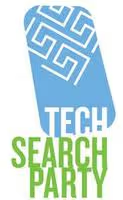
January 30, 2013
Tech search party: yearbooks, therapy, & smithys
Yearbooks, Therapy, and Smithys
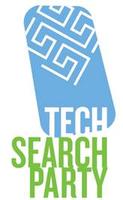 One of this year’s sponsors is Treering, which makes personalized school yearbooks. I managed the Alvarado yearbook for two years, took last year off, and am taking it on again this year.
One of this year’s sponsors is Treering, which makes personalized school yearbooks. I managed the Alvarado yearbook for two years, took last year off, and am taking it on again this year.I’m unabashedly biased toward Treering, but let me tell you why. With Treering, you get to create your own personal pages that are incorporated into the larger book created by the yearbook team. Your best and favorite photos will absolutely be in your yearbook.
Flashback to 1980. I grew up in a largely Sicilian town outside of Boston. So it wasn’t surprising that the largest section of my class yearbook was the d’ section. D’Onofrio, D’Agostino, d’Fiori and on and on. What was surprising was when I received my yearbook and my name was misspelled. They could spell d’Blazianata just fine but couldn’t even spell Smith properly. Yes, I’m Timothy ‘Smithy’ in the Revere High School Lantern. Imagine my joy.
Furthermore, in a yearbook with hundreds of pages and probably thousands of photos, I only appear with my official school photo. No candids at all. One member of the yearbook club was in 54 photos. Yes, I counted. The closest I came is that you can see my right ear in one of her photos. Bitter? Check. Angry at the yearbook committee? Check. Determined not to let this happen to my kids? Absolutely.
So when I heard of Treering and the fact that you get to create your own pages with as many of your own photos as you want, well, you can imagine my joy.

January 24, 2013
Usa today: college yearbooks retain relevance in print
College yearbooks retain relevance in print
By Jacob Hawkins
The school yearbook is an institution for middle and high school students, summoning eager requests for signatures, crushes surrounded by red-penned hearts, and — if you’re really into it — dotting your “i” with a heart on the yearbook of someone you absolutely adore.
But that’s kid stuff, right?
In college, the yearbook’s role isn’t as well defined. In an age where everything from your morning eggs to last Friday night are instantly documented — sepia filter and all — on Instagram, Facebook, or Twitter, the yearbook is something of an enigma.
The Associated Collegiate Press (ACP), a national organization providing support and recognition to college newspapers, journals, and, yes, yearbooks, holds the need for college yearbooks in high regard.
“Yearbooks document a school year in a permanent, accessible way that social media can’t,” said Logan Aimone, the executive director of ACP.
Aimone points to campus libraries that devote entire sections to preserving the annual tomes.
ACP considers the yearbook a form of journalism and holds annual competitions to critique and reward yearbook submissions. The ACP bestows the Pacemaker award, regarded by many as the highest honor for college journalists.
And unlike some journalism outlets, the yearbook doesn’t seem like it will transition to a strictly digital presence.
“I have not seen an online-only college yearbook, period,” Aimone said.
But that doesn’t mean yearbooks are ignoring the online world altogether.
Treering is an online company that bridges the gap between the digital world and a print edition by offering personalized, on-demand yearbooks.
In addition to offering print versions, Treering offers a free online yearbook that allows peers to view and digitally sign friends’ pictures.
“At large universities, you are often buying a yearbook that isn’t about you at all,” said Treering Co-founder. “For us, it is all about inserting those personal memories.”
Treering said that while they offer a digital-only version of the yearbook, in every instance the schools they work with opt to print. The publishing practices of a yearbook vary, but the content is likely to remain the same.
Rachel Wisinski, a junior at Indiana University – Bloomington and editor-in-chief of her college’s yearbook, the Arbutus, says a yearbook’s role is clear and unwavering.
“I don’t think yearbooks need to change,” she said. “A newspaper has to get the news out as soon as possible, but a yearbook doesn’t have to rely on that. … It is evergreen.”
The customer doesn’t seem to demand content change either. The ACP has reported that, at least since 2007, it hasn’t seen a decline in the number of college yearbooks being produced.
And for Treering, the business has grown steadily since it opened its doors.
On the front lines, Wisinski said that while sales of the Arbutus haven’t necessarily declined significantly, tactics have had to be beefed up to ensure students continue to find yearbooks worth their money.
“It is more of a push now. Before, the yearbook may have been seen as a more prominent media, now you just have to work harder to hook them,” Wisinski said.

October 29, 2012
Gigaom: with $3.6m, treering revives the yearbook for the facebook generation
With $3.6M, Treering revives the yearbook for the Facebook generation
By Ki Mae Heussner
Between Facebook, umpteen other private social networks and ubiquitous smartphone cameras, you’d think students wouldn’t want the traditional school yearbook anymore. And, increasingly, it turns out, they don’t.
But, Aaron Greco, CEO of Treering, a social yearbook service, argues that doesn’t mean they don’t want any yearbook at all.
“People still want to capture their memories and they still want a way to print them,” he said. “And they don’t only want it to be about themselves and their own memories.”
Digital cameras and social networking may make it easier than ever to document and share photos and updates in real-time but it seems that students (or at least the parents who pay for the books) still want to preserve shared experiences and hold on to a moment in time.
Since launching in 2010, San Mateo, Calif.-based Treering said it’s signed on more than 1,200 schools in 49 states and Canada. And, on Tuesday, the startup is set to announce that it’s raised $3.6 million in Series A funding led by its angel funder Flipboard CEO and co-founder Mike McCue, Second Ave Partners, Cedar Grove Investments, and other angel investors, including Expedia and Zillow founder Rich Barton. With the new funding, the company said, it plans to expand its team and ramp up marketing.
It’s been a while since Greco and his founders (and, admittedly, this writer) posed for an awkward yearbook picture. But he said the idea emerged when one of his founders noticed his daughter flipping through her unevolved school yearbook.
“[His reaction was] This is depressing. There has to be a better way,” Greco said.
So, Treering came up with its better way, which is this: Using the startup’s social software, school yearbook editors, as well as students and teachers, can maintain collections of photos and memories that can be added to the final yearbook. Just as they have in the past, school editors select the images that populate everyone’s books, but each person also gets two pages to personalize with their own pictures, updates (such as their favorite vacation that year or their best friend), and notes from friends.
Traditional yearbook companies like Jostens and Herff Jones have launched their own modern enhancements, including personalized pages and virtual time capsules. But Greco said Treering additionally offers schools a pricing model that takes the risk off their plate. To fund traditional yearbooks, schools have historically had to place a minimum number of orders and pay publishers upfront. But schools don’t need to pay for Treering’s software, nor do they need to play middleman, as families can purchase their books directly online.
Given all the options for storing, sharing, and displaying digital images, it’s interesting to note that people still care about printed books. Greco said consumers feel very strongly about tangible books and pointed to Shutterfly, which continues to post revenue growth, as evidence that the printed book continues to have a place.
“It’s a great bellwether for where the industry is going,” he said. “With all of those pictures on their smartphones, [consumers] want to do something with them. “
READ MORE
September 25, 2012
Social yearbook company, treering, raises $3.6 million in series a funding
With 3.3 Million Photos Shared and 1,200 customers and growing, Treering is changing the way students capture and share their memories.
San Mateo, CA, September 25, 2012– Treering, the world’s first social yearbook company, today announced it has closed a $3.6 million investment led by their angel funder Mike McCue (CEO of Flipboard), Second Ave Partners and Cedar Grove Investments. Additionally, several angel investors participated in the round, most notably the Expedia and Zillow Founder, Rich Barton.
As another school year starts and students set out to create another year of memories, one thing is clear: traditional yearbooks are a thing of the past. Since launching in 2010, schools have been changing the way they are capturing their memories. Treering’s new model allows yearbooks to be built online through their online social network and printed on-demand with personalized pages for each student. The company now has over 1,200 schools across 49 states and Canada. Additionally, Treering has printed more than 125,000 yearbooks, and users are sharing more than 3.3M photos.
With this funding, Treering will continue to expand its team and grow its marketing across the country. Treering has recently expanded its platform to allow students, parents, and teachers to not only share photos and page content with each other, but students can also sign one another’s yearbooks, share memories, and send each other graphic based messages, which Treering has dubbed “book bling.”
“Treering has ingeniously combined the new capabilities of print, social, and design technologies. Not only does this change the American yearbook forever, but this will change how students capture their memories and remember their youth in years to come,” said Mike McCue, CEO of Flipboard.
“We’ve brought the $5 billion custom memory book industry to the $2 billion yearbook industry and glued them together with the power of online social networks. Most importantly we are allowing kids to capture and share their memories in a much more meaningful way and saving schools money while doing it,” according to Treering CEO and Co-Founder Aaron Greco.
Treering also has overturned the traditional pricing model of the yearbook industry, which usually charges schools advance deposits, makes them guarantee a certain number of sales, and puts schools in the business of collecting payment from families. Treering offers its tool at zero cost to schools, and families purchase books directly online, taking schools out of the middleman role and ensuring that no one has to juggle excess yearbook inventory at the end of the school year. That saves schools time, space, as well as paper waste.
Through a partnership with the nonprofit organization, Trees for the Future, Treering also plants a tree for each yearbook that is purchased. And schools have the option of tacking a fundraiser premium onto their yearbook price, allowing them to raise a couple of dollars per book purchased without any additional work, serving as an easy and effective fundraising tool at a time when schools are increasingly crunched for funding. This past year alone Treering schools raised over $130K.
visit https://www.treering.com for more

September 25, 2012
Geekwire: a yearbook for the facebook generation: rich barton, mike mccue back treering
A yearbook for the Facebook generation: Rich Barton, Mike McCue back Treering
By John Cook
Call it a yearbook for the Facebook generation.Treering, a San Mateo, California startup, has landed $3.6 million from some heavy hitters in the tech industry to radically upend the traditional yearbook industry.
Among the backers of the company are Zillow co-founder Rich Barton; Flipboard CEO Mike McCue and Seattle area venture capital firms Second Avenue Partners (Mike Slade) and Cedar Grove Investments (Tom Hughes).
Treering’s proposition is pretty simple. The company allows yearbooks to be built online through one’s online social network and printed on-demand with personalized pages for each student. More than 1,200 schools have already signed on to the program, with 125,000 yearbooks printed to date.
Prices are comparable to traditional yearbooks. For example, an 80-page hardcover yearbook with two custom pages for the student costs $28.94. There are no minimum orders or commitments for schools, meaning that schools don’t get stuck with a lot of leftover inventory.
“Treering has ingeniously combined the new capabilities of print, social, and design technologies. Not only does this change the American yearbook forever, but this will change how students capture their memories and remember their youth in years to come,” said Flipboard CEO Mike McCue.
The idea is interesting in part because Treering isn’t looking to eliminate the physical yearbook altogether, but rather use technologies to make it better.

June 27, 2012
Newsday: more school yearbooks adding online content
More school yearbooks adding online content
By SCOTT EIDLER
The yearbook experience at many Long Island schools is starting to resemble Facebook browsing -- with online content that lets students like, tag and share photos -- as the century-old tradition turns to technology to keep the industry profitable.
New computer programs from startup companies allow students to create personal electronic versions using images from the hardcover editions and even ones that didn't make the cut, yearbook makers say.
As startups grow -- 3-year-old Tree Ring works with more than 1,000 schools, including ones in Uniondale and Lynbrook -- industry leaders Jostens and Herff Jones have launched their own digital enhancements in a bid to keep up.
"It's a competitive industry," said Drew Krejci, a communications manager at Jostens. "We're making sure that we leverage all the technology to create a stronger and better book."
Some of the startups let students create customized collage pages -- printed only in their yearbooks -- that are catching on with parents who might otherwise worry about their child's presence in the yearbook.
"It made more people actually want the book," said Margo Cargill, a parent who edited the fifth-grade yearbook at Northern Parkway Elementary in Uniondale.
"The traditional yearbook is kind of a great memento for the school, but it's not always about each student," said Aaron Greco, Tree Ring's chief executive.
At Our Lady of Mercy Academy in Syosset, which works with Jostens, the 2012 yearbook will come with a virtual time capsule. Over the school year, students have posted pictures, tagged their classmates, and categorized images by time and place for the time capsule that will be "sealed" permanently on June 30. This fall, Herff Jones will offer a similar digital supplement for its clients. Earlier this week, the company closed down one of its four yearbook plants, laying off 130 workers.
"The entire publishing industry is in a state of transformation right now," said Len Vlahos, executive director of the Book Industry Study Group, a nonprofit book trade association.
Among the most avid supporters of the changes are parents. Software programs say some yearbook advisers, make adding photos easier and more collaborative. Students and parents can upload images from their iPod Touch devices, Facebook accounts, and smartphones. Some moms even texted them in.
One benefit of the digital software, parent advisers found, is its ability to keep track of how many photos each student is tagged in. At West End Elementary School in Lynbrook, parents kept things fair by making sure that students appeared in at least two pictures for each grade's "memory page," but no more than five.
One parent editor stood outside of classrooms and snapped cellphone pictures of students who weren't in enough photos.
"There's a big deal if somebody's child is in the yearbook 20 times," Mary Calabro said.
New computer programs from startup companies allow students to create personal electronic versions using images from the hardcover editions and even ones that didn't make the cut, yearbook makers say.
As startups grow -- 3-year-old Tree Ring works with more than 1,000 schools, including ones in Uniondale and Lynbrook -- industry leaders Jostens and Herff Jones have launched their own digital enhancements in a bid to keep up.
"It's a competitive industry," said Drew Krejci, a communications manager at Jostens. "We're making sure that we leverage all the technology to create a stronger and better book."
Some of the startups let students create customized collage pages -- printed only in their yearbooks -- that are catching on with parents who might otherwise worry about their child's presence in the yearbook.
"It made more people actually want the book," said Margo Cargill, a parent who edited the fifth-grade yearbook at Northern Parkway Elementary in Uniondale.
"The traditional yearbook is kind of a great memento for the school, but it's not always about each student," said Aaron Greco, Tree Ring's chief executive.
At Our Lady of Mercy Academy in Syosset, which works with Jostens, the 2012 yearbook will come with a virtual time capsule. Over the school year, students have posted pictures, tagged their classmates, and categorized images by time and place for the time capsule that will be "sealed" permanently on June 30. This fall, Herff Jones will offer a similar digital supplement for its clients. Earlier this week, the company closed down one of its four yearbook plants, laying off 130 workers.
"The entire publishing industry is in a state of transformation right now," said Len Vlahos, executive director of the Book Industry Study Group, a nonprofit book trade association.
Among the most avid supporters of the changes are parents. Software programs say some yearbook advisers, make adding photos easier and more collaborative. Students and parents can upload images from their iPod Touch devices, Facebook accounts, and smartphones. Some moms even texted them in.
One benefit of the digital software, parent advisers found, is its ability to keep track of how many photos each student is tagged in. At West End Elementary School in Lynbrook, parents kept things fair by making sure that students appeared in at least two pictures for each grade's "memory page," but no more than five.
One parent editor stood outside of classrooms and snapped cellphone pictures of students who weren't in enough photos.
"There's a big deal if somebody's child is in the yearbook 20 times," Mary Calabro said.

